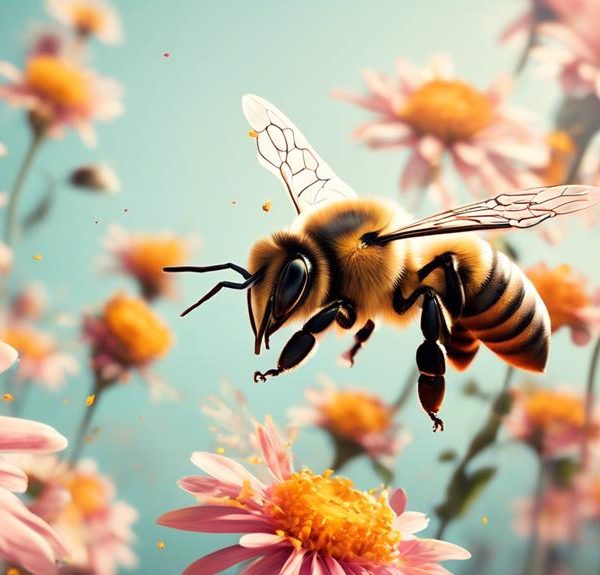Learn about the fascinating reasons behind a queen bee's departure from her hive in a natural occurrence known as 'swarming'.
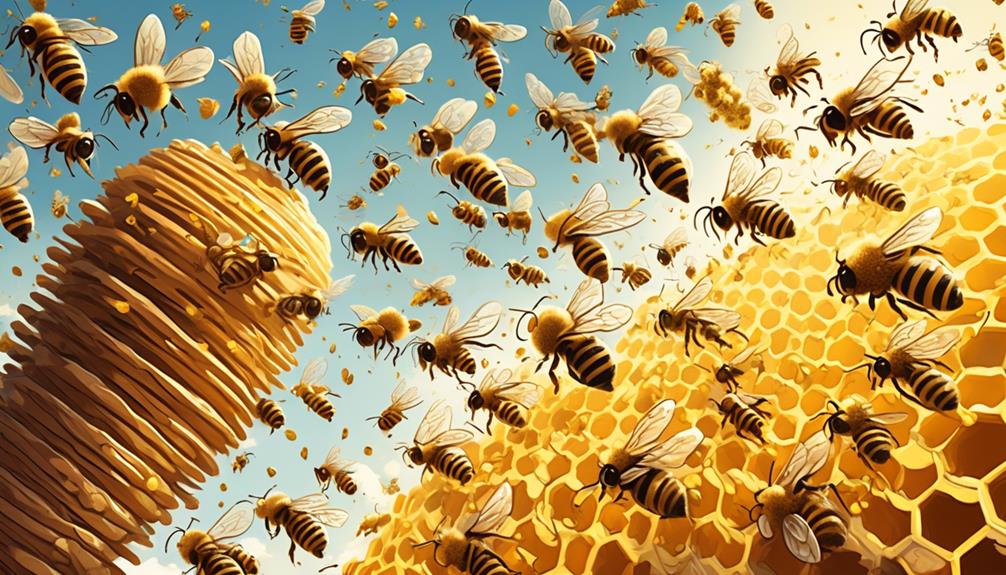
Why Do Queen Bees Leave the Hive?
Just as a seasoned captain abandons his once beloved ship, so too does the queen bee leave her hive, a behavior that might baffle you.
This departure isn't due to dissatisfaction, rebellion, or exhaustion – it's a natural occurrence known as 'swarming.'
But what factors could possibly compel a queen, the glue of her colony, to uproot herself from her throne and venture into the unknown?
Is it a choice or a necessity?
Let's embark on this journey to unravel the secrets behind this intriguing phenomenon.
Key Takeaways
- The queen bee leaves the hive as part of the natural swarming phenomenon when the hive becomes overcrowded.
- Factors such as overpopulation, low food supply, arrival of a new queen, health issues, and environmental factors can influence the queen's departure.
- A new queen bee is raised in the hive, and the old queen leaves with half the worker bees.
- The departure of the queen bee results in changes in the hive structure, including a decrease in the number of bees and a shift in focus towards raising a new queen.
Understanding Queen Bee's Role
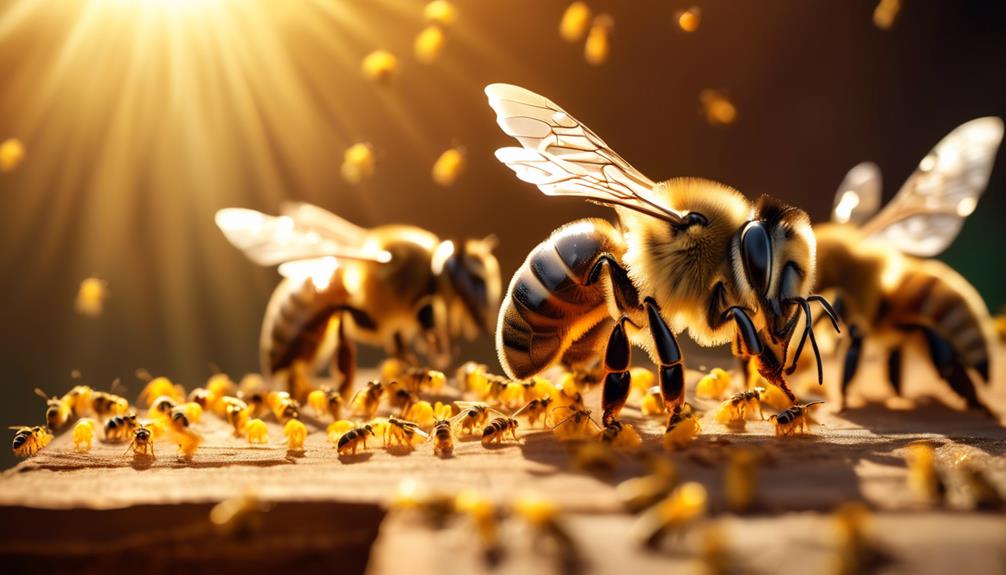
So, what exactly is the role of a queen bee in a hive? Well, she's the heart and soul of the entire operation. Her primary function? To lay eggs. Lots of them. She's the mother of every single bee in the hive, laying up to 1,500 eggs per day during springtime when the hive is actively growing.
But her role isn't just about reproduction. The queen bee has a unique scent, known as queen substance, that she emits to keep the hive functioning smoothly. It's a pheromone that maintains the unity and social order of the hive. Without it, the worker bees would become disoriented and the hive would fall into chaos.
She also decides when it's time to swarm. Swarming is the process of forming a new colony, which usually happens when the current hive becomes overcrowded. The queen will leave with about half of the worker bees to find a new home, leaving a new queen in her place.
Your understanding of the queen bee's role is crucial to comprehending why she might leave the hive. She's not just a figurehead; she's an essential cog in the hive's machinery.
The Swarming Phenomenon
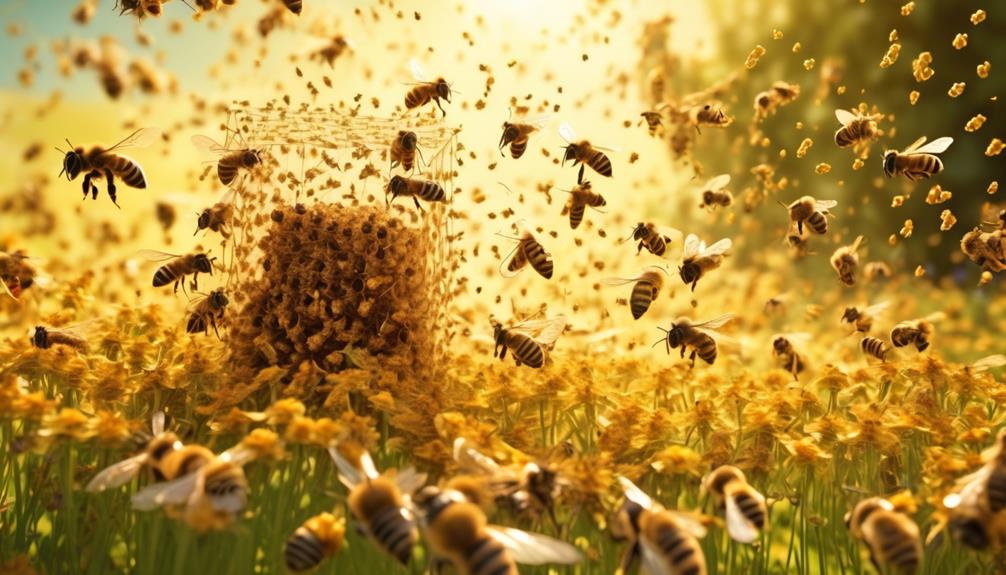
When the hive's walls can no longer contain the bustling bee population, the swarming phenomenon – a natural, awe-inspiring spectacle – kicks into gear. Swarming is your bees' way of expanding their population and colonizing new areas. It's a survival mechanism, not a rebellion against the queen.
In this phenomenon, a new queen bee is raised, and the old queen, along with about half the worker bees, leaves the hive to establish a new colony. This mass exodus typically occurs in spring or early summer, when resources are abundant. As you observe, you'll notice a sudden flurry of activity, as if the hive has erupted.
Don't panic, but don't ignore it either. The swarm will cluster around the old queen, forming a temporary living bivouac, while scout bees search for a suitable new home. If you're a beekeeper, it's crucial to manage swarming, as it can significantly reduce your hive's honey production.
Understanding and managing the swarming phenomenon requires knowledge, patience, and practice. But remember, it's an essential part of the bees' life cycle. Without it, bees wouldn't be able to sustain their species or contribute to our ecosystem the way they do.
Factors Influencing Queen's Departure
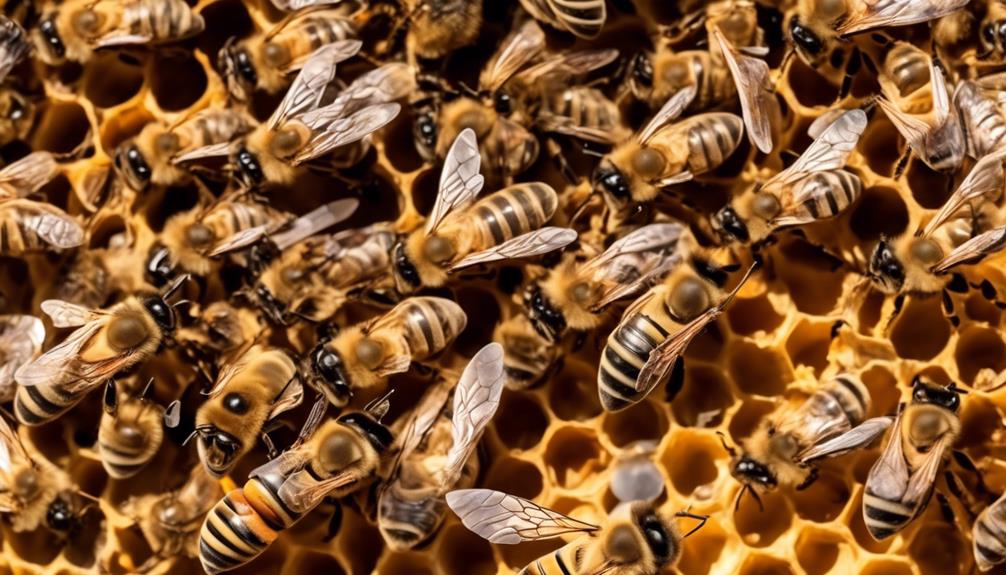
While understanding the swarming phenomenon is crucial, it's equally important to know what triggers the queen bee's decision to abandon her established hive. There are several factors at play here.
Overpopulation is a significant trigger. When the hive becomes too crowded, the queen bee might decide it's time to pack up and leave, leading a swarm to establish a new colony.
Food supply also plays a pivotal role. If the hive's resources are running low, the queen might opt to relocate to ensure the colony's survival.
The arrival of a new queen can also prompt the existing queen to leave. Bees often raise a new queen if they sense the current one is aging or failing. When the young queen matures, she'll either take over the current hive or leave with a swarm to start a new colony.
The health of the queen is another factor. A diseased or weak queen might leave, or be forced out by the worker bees.
Finally, environmental factors such as weather conditions or threats from predators can force a hive relocation.
Knowing these factors can help you anticipate and prepare for a possible swarm.
Birth of a New Queen Bee
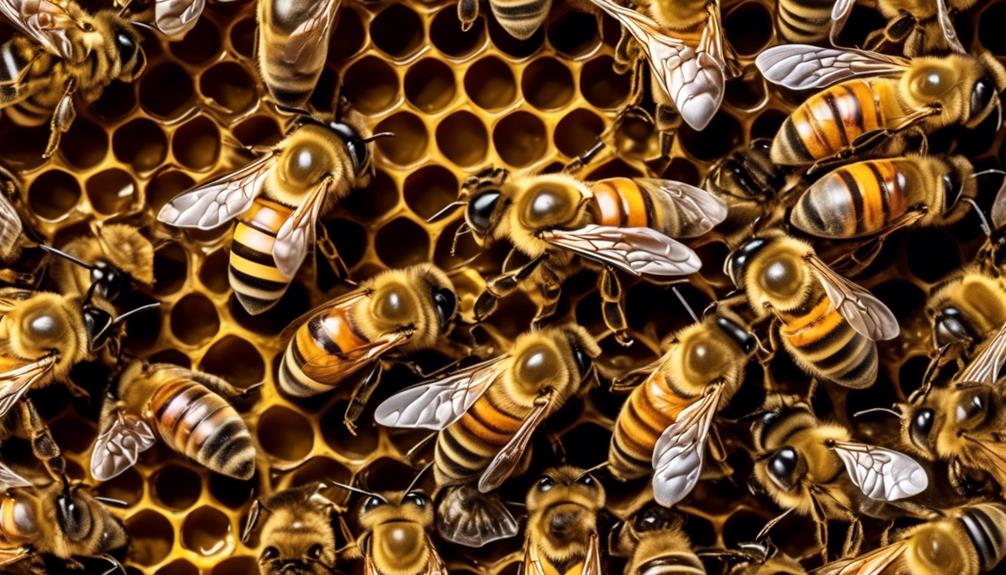
In the fascinating world of bees, the birth of a new queen is a complex, yet critical process that you'll want to understand. It all starts when the existing queen lays fertilized eggs in specially prepared larger cells. These cells are then filled with a nutritious substance called royal jelly, which is what transforms an ordinary bee into a queen.
As these eggs hatch into larvae, they continue to be fed royal jelly, allowing them to develop into queens. It's a race against time, as the first new queen to emerge will typically kill her rivals while they're still in their cells. If two queens emerge simultaneously, they'll fight to the death.
Once a new queen is established, she'll make a maiden flight to mate with multiple drones. After this, she'll return to the hive and start laying eggs, officially taking over the role of the old queen. However, if the old queen hasn't left the hive by this point, she'll be driven out or killed by the worker bees, ensuring the new queen's reign.
This cycle ensures the continuity and survival of the colony, making the birth of a new queen a pivotal event in the life of a hive.
Impact on the Hive Structure
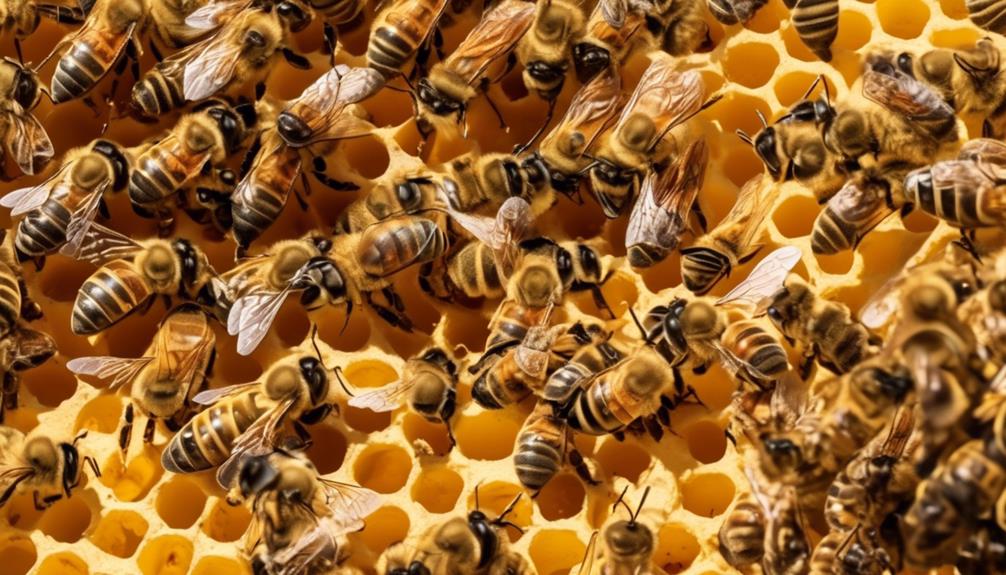
Following the rise of a new queen, the structure of the hive undergoes significant changes that are crucial to accommodate the new leadership. The queen bee, as the sole reproductive female, determines the hive's population size. Her departure, therefore, results in a dramatic decrease in the number of bees unless a new queen takes over promptly.
As a beekeeper, you'll notice the hive becoming quieter and less active, indicating a shift in the hive's dynamics. Without a queen, worker bees cease their regular duties, like foraging for food and tending to the brood. Instead, they focus on raising a new queen from the remaining eggs. This period of transition can leave the hive vulnerable to external threats, such as pests or disease.
The new queen's arrival, however, sparks a resurgence in activity. She begins laying eggs almost immediately, restoring the hive's vibrancy and productivity. It's essential, though, to monitor this transition closely. Any delay in the new queen's egg-laying can lead to a prolonged period of instability, potentially resulting in the collapse of the hive.
Understanding this cycle is key to successful beekeeping and ensuring the health of your hives.
Frequently Asked Questions
What Happens to a Hive if a Queen Bee Never Leaves?
If a queen bee never leaves your hive, it's unable to mate, meaning she can't lay fertilized eggs. Without new bees, the hive's population declines rapidly. The worker bees can't replace her, as they're infertile. It's crucial she leaves at least once for a mating flight.
If she doesn't, you'll see fewer bees, less honey production, and ultimately, the demise of the entire hive. So, a queen's departure is essential for a hive's survival.
How Does the Queen Bee Choose Which Bees Will Accompany Her When She Leaves the Hive?
When a queen bee decides to depart, she doesn't actually choose which bees go with her. It's more about the worker bees' choice. They decide to follow the queen due to her pheromones, a chemical signal she emits.
Are There Any Specific Seasons When Queen Bees Are More Likely to Leave the Hive?
Yes, there are specific seasons when queen bees are more prone to leave the hive. This typically happens during spring and early summer. That's because these seasons provide optimal conditions for new colonies to establish.
The weather's warm, food sources are abundant, and days are longer. So, if you're a beekeeper, it's crucial to keep a keen eye on your hives during these periods to prevent any unwanted swarming.
Can a Queen Bee Return to the Hive After She Leaves?
Yes, you're right to wonder.
A queen bee can indeed return to her hive after leaving. However, this usually occurs only if she's gone on a mating flight or is enacting a swarming process.
Once she's successfully mated or established a new colony, she typically doesn't return to her original hive. So, while it's possible, it's not the norm for a queen bee to go back.
How Do Worker Bees Respond When a Queen Bee Decides to Leave the Hive?
When the queen bee decides to leave the hive, the worker bees react instinctively. They'll immediately begin to raise a new queen. They do this by selecting a young larva and feeding it royal jelly, a substance that enables the larva to develop into a fertile queen.
Conclusion
So, you see, a queen bee's departure is a natural, yet complex process. It's influenced by factors like overcrowding and the birth of a new queen.
This swarming phenomenon, though disruptive, ensures the survival of the bee species. It might seem chaotic, but it's an essential part of hive dynamics.
Understanding these intricacies can help you better appreciate the fascinating world of bees and their vital role in our ecosystem.

